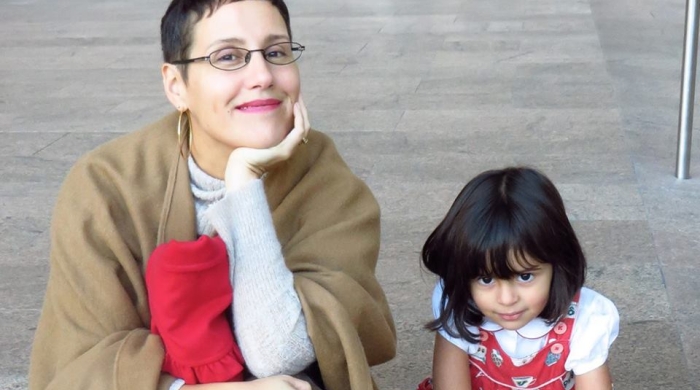
Perhaps you’re one of the many parents who COVID-19 has at home, which means you get to spend more time than ever with your adorable 4-year-old. But caring for your child at home while still holding remote meetings and doing the daily household chores, seems a bit more than you signed up for. As time goes by, you realize your child hasn’t attended daycare or received any educational instruction in weeks. COVID-19 has turned our reality into something out of a Salvador Dalí painting, and now you may have to be the one teaching your 4-year-old subjects like math?
Thankfully, we have some good news: COVID-19 or not, you were, and are, one of your child’s best (math) teachers.
We’re not saying pre-K and early elementary teachers are replaceable – in fact, hopefully this pandemic garners even more respect for the herculean work our teachers do. When we say that you are your child’s best math teacher, we are drawing upon extensive developmental psychological literature about the everyday interactions and routines that keep our youngest minds active and learning.
Every time your child counts the crackers on their plate, or you divide a clementine into its pieces, you’ve got a learning moment. Ask your child to count how many chocolate pieces or strawberries they have in front of them, and without skipping a beat, they’ll start reciting “One, two, three…” They may not always count correctly. Maybe they’ll skip the numbers five and seven. But they won’t hesitate to begin counting. It’s almost ritualistic, and mixed with cabin fever it’s perhaps even maddening, but your kid doesn’t mind. In fact, young children are eager to count objects and sort shapes and compare the sizes of things.
Your floor is probably already littered with math-friendly and foot-not-so-friendly toys. Every block tower, LEGO, every Magna-Tile, shape sorter, board game, and puzzle is an opportunity for math. You probably already knew that these toys and activities were designed to be educational. And your child probably already plays with these toys, with that same look of focus you have as you muddle through your taxes. But simply having those toys around doesn’t guarantee that your child will learn math. Thankfully, the solution is rather simple:
All you have to do is join in.
That’s right. The most important part of counting, shape-sorting, and puzzle-solving is not the toy, or the amount of time your kid spends on it. It’s you.
Multiple studies suggest that by simply using more math language at home, parents can support the fundamental building blocks of their children’s math knowledge. One study found that the amount of number words children heard at home during the first three years of life predicted children’s number knowledge at age 4 (Levine, Suriyakham, Rowe, Huttenlocher, & Gunderson, 2010). In particular, parents’ counting or labeling of sets of concrete, visible objects — such as, four baby carrots on the plate or three bears in the book — was particularly related to children’s later number knowledge (Gunderson & Levine, 2011).
And it doesn’t stop at numbers. Children’s math knowledge grows as you use spatial language too. This includes words about size (e.g., big, small); textures (e.g., curvy, flat); shapes (e.g., triangle, square, circle); and spatial relations and prepositions (e.g., next to, behind, under). Research has shown that parents’ spatial language use at home during the early years of life promotes the development of skills foundational to later math (Pruden, Levine, & Huttenlocher, 2011). By giving children the words to fit and describe the spatial and math concepts they are already exploring, you are giving your child the tools to build even more sophisticated math knowledge.
From you, your child learns not only the knowledge and skills that once lay beyond their grasp — called ‘scaffolding’ in the world of developmental psychology — but also learns which skills, facts, and things they should consider important or meaningful in this crazy, confusing world that they’re only recently getting a handle on. So if your child is trying to build a tower from plastic blocks and you take interest in your child’s blocks – their different sizes and shapes, stacking them on top or next to one another, building tall towers and long walls – your child will learn to love those activities and the math elements you help them discover. And you will have done your job as a math teacher.
Hopefully, we have effectively convinced you that you already have the tools to be an amazing math teacher for your child. Now, in this topsy-turvy world of COVID-19, we figure we should end with several concrete, actionable suggestions for teaching math in the comfort of your quarantine:
- Count everything. Especially those objects the child is playing with. Count sets of objects. Then compare the sets to see which has ‘more’ and which has ‘less’.
- Talk about shapes. Your plates are probably circles, your windows are probably squares, and pizza night involves eight triangles in a circle delivered to you in a square. Shapes are everywhere!
- Talk about spatial relations. Those same circular plates are probably on the table. The windows are next to each other. And the pizza is delivered inside a box. Use these spatial relational words, rather than words like here and there.
- Play with math-rich toys. Shape sorters and puzzles are opportunities for shapes and rotating objects in space; blocks are opportunities for prepositions like ‘on top’ and ‘next to’ (Ferrara, Hirsh-Pasek, Newcombe, Golinkoff, & Lam, 2011); board games with numbered spaces help with counting and other number skills (Ramani & Siegler, 2008); even cutting toy fruit can be a lesson in fractions!
- Lastly, and most importantly: Take a deep breath, and count to ten.
These are certainly stressful times, and you never thought you’d be responsible for schooling your child. But they’re ready to learn, and they especially love learning with you. Find the learning moments in your everyday routines and interactions, and you’ll be the best math teacher your child could ask for.
Daniel Suh is a 4th year doctoral student in the Developmental Psychology program in the department of Applied Psychology and an IES-PIRT fellow.
Jacob Schatz is a 3rd year doctoral student in the Developmental Psychology program in the department of Applied Psychology and an IES-PIRT fellow.
Related Links:
- Grocery games: How ethnically diverse low-income mothers support children’s reading and mathematics. Leyva, D., Tamis-LeMonda, C. S., Yoshikawa, H., Jimenez-Robbins, C., & Malachowski, L.
- Routine language: Speech directed to infants during home activities. Tamis‐LeMonda, C. S., Custode, S., Kuchirko, Y., Escobar, K., & Lo, T.
- Do, say, learn: The functions of mothers' speech to infants. Kuchirko, Y. A., Schatz, J. L., Fletcher, K. F., & Tamis-Lemonda, C.
- Children’s Block-Building Skills and Mother-Child Block-Building Interactions Across Four US Ethnic Groups. Suh, D. D., Liang, E., Ng, F. F. Y., & Tamis-LeMonda, C. S.
References:
- Ferrara, K., Hirsh‐Pasek, K., Newcombe, N. S., Golinkoff, R. M., & Lam, W. S. (2011). Block talk: Spatial language during block play. Mind, Brain, and Education, 5(3), 143-151.
- Gunderson, E. A., & Levine, S. C. (2011). Some types of parent number talk count more than others: relations between parents’ input and children’s cardinal‐number knowledge. Developmental science, 14(5), 1021-1032.
- Levine, S. C., Suriyakham, L. W., Rowe, M. L., Huttenlocher, J., & Gunderson, E. A. (2010). What counts in the development of young children's number knowledge?. Developmental psychology, 46(5), 1309.
- Pruden, S. M., Levine, S. C., & Huttenlocher, J. (2011). Children’s spatial thinking: Does talk about the spatial world matter?. Developmental science, 14(6), 1417-1430.
- Siegler, R. S., & Ramani, G. B. (2008). Playing linear numerical board games promotes low‐income children's numerical development. Developmental science, 11(5), 655-661.
Read More
Leveraging the Math We Do
Dr. Gigliana Melzi, professor and researcher at NYU, provides parents with steps to be better math educators at home during COVID-19.


